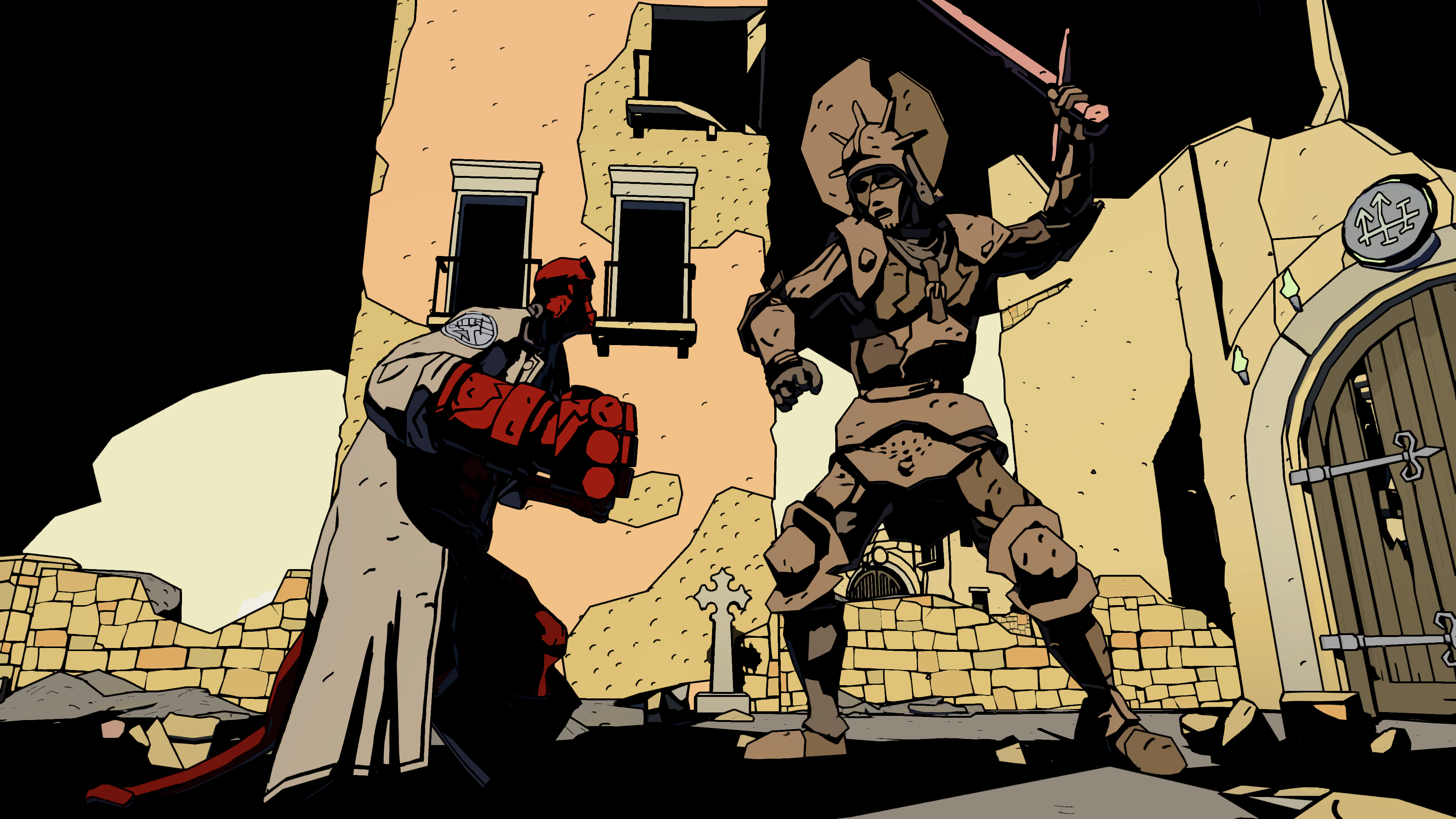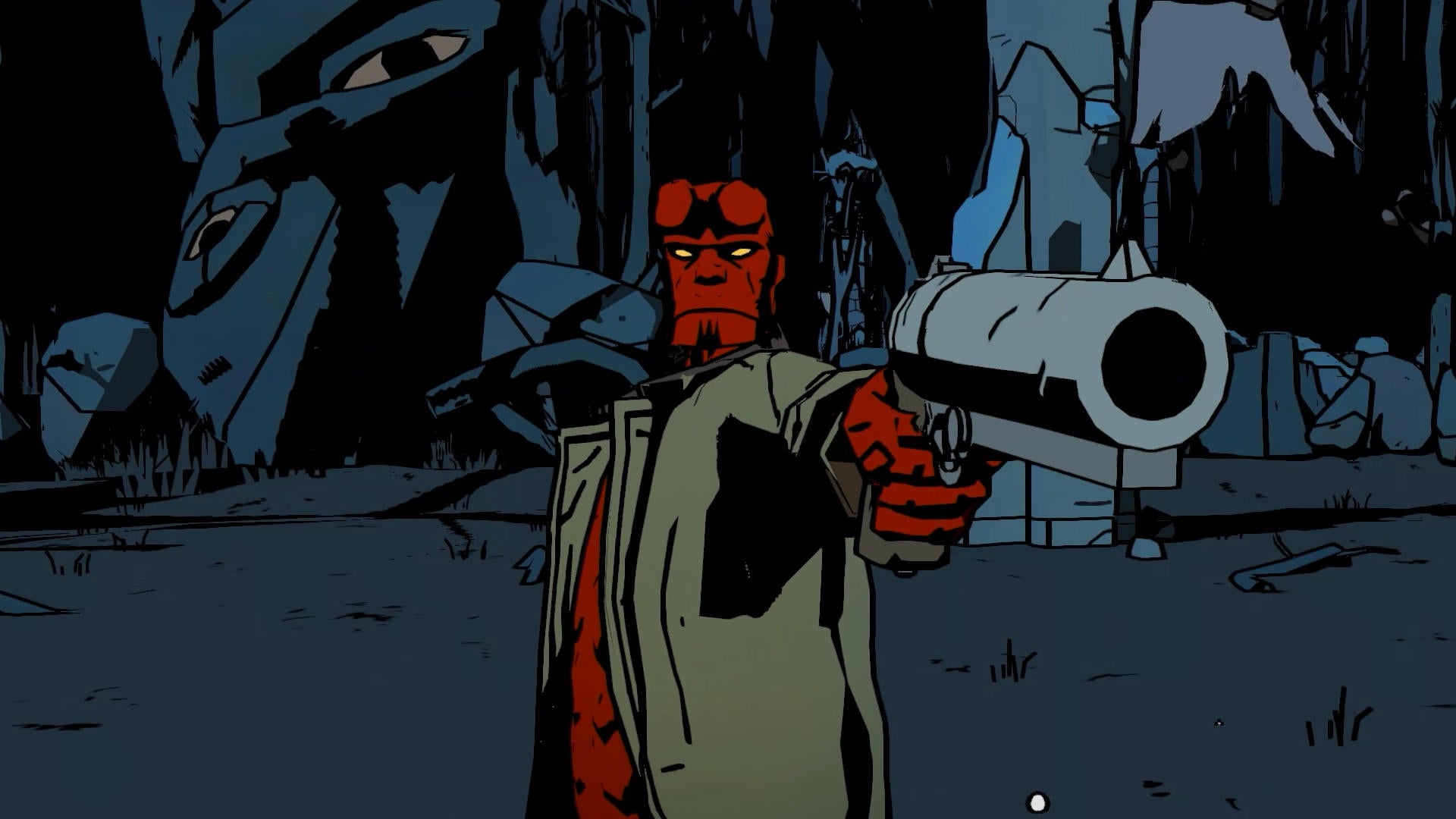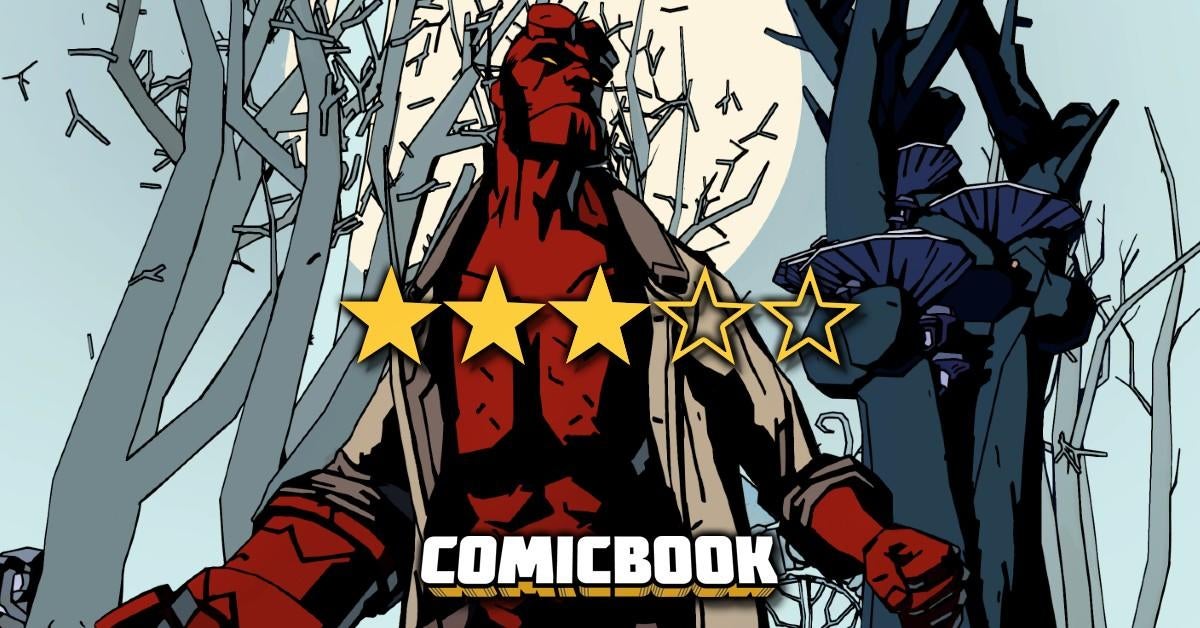Hellboy: Web of Wyrd Review: No Successor to the Throne of Hades
Hellboy: Web of Wyrd gets a 3 out of 5 from ComicBook.com
Hellboy has lived in the pages of comics for decades. Though attempts have been made to bring him to life in live-action, animation, and video games with varying degrees of success, there was always something missing, that signature look and feel of Mike Mignola's original comics. The gothic tomes that Hellboy starred in have become a pillar in the language of comics thanks to Mignola's visual storytelling, and that is Hellboy: Web of Wyrd's big selling point for fans and gamers, it has recreated the comic legend's signature style in a roguelike beat-em-up. What Hellboy: Web of Wyrd offers on its surface however doesn't really make up for the fact that at its core it is a repetitive, sometimes dull, experience.
The visual style of Hellboy: Web of Wyrd really is its best selling point. Hellboy: Web of Wyrd is able to take the shadows and darkness that define negative space in Mike Mignola's art and make it work in a medium that has depth, texture, and movement. Even just moving the camera around the lead character while walking across a level can produce unique shadow patterns on his image that feels like the Hellboy comics have come to life.
In a narrative sense, Hellboy: Web of Wyrd has crafted a tale that not only makes the mold of the roguelike work for its plot but a story that feels like something Mike Mignola might have come up with for Hellboy comics. Hellboy and a team have been deployed to a mysterious house in Argentina, seeking answers for spikes of psychic activity happening around the world. Inside Hellboy finds the Wyrd, a mysterious alternate dimension filled with monsters and mayhem, but one that seems to rigidly stick to the idea of storytelling and narrative being a living construct. By working his way through the Wyrd and battling the forces from within, Hellboy can combat the problems happening around the globe, but naturally, there's a deeper layer to it all.
The environments that Hellboy finds himself in also lend themselves to the larger Mignola aesthetic, with each level taking on a different location and featuring its own unique enemies, all of them bringing the non-euclidean geometry from Mignola's pages into a (mostly) 3D space. Hellboy: Web of Wyrd's enemies are all brand new for the game, with no familiar faces appearing from the pages of the comics, but they all still have the right kind of look to them. Whether they're based in folklore or in mutated animals, these Hellboy villains feel like they're in the right place.

In terms of actual gameplay, it's a little ironic to see how influenced Hellboy: Web of Wyrd is by 2020's Hades, which can largely be credited with igniting interest in the roguelike subgenre for the mainstream. Hades offered players a slew of customizable options and upgrades, meaning that their "runs" in the game could be vastly different each time based on not only the procedurally generated levels but in how they choose to play the game. Hellboy: Web of Wyrd however has very few options by comparison. Ahead of each run, three different side arms and three different charms are at your disposal, plus a handful of different blessings (upgrades) that can be applied to them as you venture further into the Wyrd.
Like other roguelikes Hellboy: Web of Wyrd rewards players for continued playthroughs, allowing you to upgrade not only your weapons and charms but your health, toughness, and other key character components. The various levels that players find themselves in however become tedious after the handful of attempts it takes to really get the hang of it all, resulting in gameplay that feels repetitive, and seldom in a fun way.
At times while playing Hellboy: Web of Wyrd, the AI will just not engage with the player at all, standing around like they've forgotten their purpose, sometimes even walking about as if they've misplaced their wallet. This is nice of them as it will give players the opportunity to reload their gun, but when you engage in eight or nine battles just like this before getting to the boss fight of a level the boredom may already have begun to set in. There's also the matter of figuring out the meta of the game, which charms and weapons work best with which blessings, but with so few options the trial and error of what works the best can be figured out quickly, taking a lot of the wind out of the fights' sails.
Take all that and add to it that by the time it feels like your run is just getting started, your upgrades coming together and your plan for how to tackle all fights, the levels are over. You're back to square one, and it's time to start a different level. Eventually, about nine or ten hours into the game, you get to a point where Hellboy: Web of Wyrd will finally let you go on an extended run. When this happens you can make your way through a version of all the levels combined into one, but the apparent trade off for giving this to you is that each level's bosses are now nowhere to be found. As a result, yes you can go on a longer run with the most powerful version of your character that you've ever had, but now most of the challenge is gone and the real thing that made each level so unique is now gone.

Combat in Hellboy: Web of Wyrd is the majority of the game, which goes hand in hand with the customization aspects of players' builds for each run. There's also a hint of exploration, as the levels change every time you play them. New paths are forged and new thresholds are present, which at least gives the forced replayability some freshness. This can also result in frustrating moments, though, as the game might give you two different places that need to be unlocked by keys, but only one key will spawn in the entire level. When given the choice of backtracking to look for new paths or items you may have missed, the exploration side of the game becomes a walking simulator and feels nothing like an investigation that Hellboy would find himself a part of.
It goes without saying that the late Lance Reddick was an undeniable talent on screen and as a voice actor. With Hellboy: Web of Wyrd however, Reddick takes on the voice of the title hero, and sadly, it's another element that will pull you out of the action. Reddick's line readings largely just sound like him, no different in terms of delivery or voice than The Wire's Cedric Daniels or Fringe's Phillip Broyles. Some instances, largely when he's in a major action beat and speaking through gritted teeth, will really sound like an actual Hellboy performance, but mostly you're just going to hear Lance reading some fun lines. It's all another instance of the game's repetitive nature if you're going to hear Reddick say the same things over and over and over, prepare to hear "This definitely looks like a key of some sort," like only Lance could say it, about 1,000 times.
Hellboy: Web of Wyrd has spurts of fun to be found in its gameplay, which is held up by the grand visual aesthetics at the heart of it all. If the game didn't look like a living Hellboy comic it wouldn't be engaging, but that alone cannot save it from the repetitive and slow gameplay that sits at the heart of the entire thing. Luckily Hellboy: Web of Wyrd looks good and it has a story that feels authentic to its character. In the end though, it's also a very short game, and by the time you complete it all and are then allowed to do long runs with more customization options…you may have had your fill.
Rating: 3 out of 5

Hellboy: Web of Wyrd is available now on PC, PlayStation 4 & 5, Xbox Series S & X, and Nintendo Switch. A code was provided by the publisher for the purpose of this review, and it was reviewed on PC.